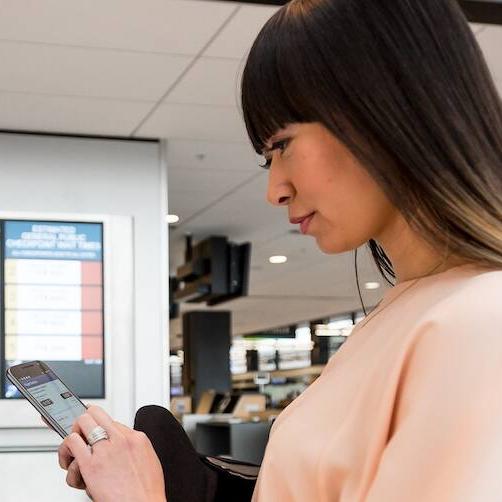Duty of Care
Data is Key to Protecting Your Most Valuable Asset – Your People
In part one of our four-part series, we shared how organizations today still have gaps in their duty of care programs. Then, in part two, we dived deeper into what those common gaps are for travelers and employees, and the actions you can take to better support all of your people.
Next, we turn our attention to the role data plays in implementing a successful travel risk management (TRM) program. The effort required to manage a TRM program is a huge task, and having the right stakeholders in place is essential to understanding the data requirements for effectively monitoring and managing TRM.
A team approach to travel risk management
Historically, the burden of managing travel risk might’ve fell strictly on an organization’s travel manager. However, according to a 2017 Business Travel News (BTN) report, “ Taking on Travel Risk Management,” companies are trending towards a ‘team approach’ in bringing multiple internal and external stakeholders for TRM initiatives.
Of the 229 travel managers and corporate safety and security managers surveyed by the BTN, internal travel risk management stakeholders include:
- Travel management (76%)
- Traveler (65%)
- HR or benefits (62%)
- Executive management (54%)
- Health, safe and/or risk (50%)
- Legal (42%)
- Corporate security (40%)
- Travelers’ families (23%)
- Compliance (21%)
- Corporate communications (21%)
- Other (1%)
Additionally, approximately a third of respondents said travel management companies (TMCs) are their primary external partners for TRM, while 29% said they mostly rely on travel risk providers, and 19% rely on traveler tracking or risk management platforms.
“A lot of businesses that are getting into travel risk are just touching the tip of the iceberg,” said Stephen Barth, a University of Houston law professor and founder of the Hospitality Lawyer. “It’s really unfair to put that burden on a travel manger. You have to think about your entire ecosystem of travel risk management.”
Once you’ve gotten the right stakeholders involved, you can then start to better understand the data requirements needed for an effective TRM program.
Integrated data is the heart of a TRM program’s success
With the different internal and external stakeholders involved, integrating data collected from various sources for an effective TRM program can be difficult, especially with the increase in travel bookings made outside of the TMC or directly with suppliers.
The BTN research demonstrates a reliance on itinerary data and employee contact data to fuel an organization’s TRM program – internally and externally by travel management companies. Data sources companies use to support TRM include:
- Itinerary data (66%)
- Employee contact information (66%)
- Market-specific threat information (46%)
- Ongoing threat information (43%)
- HR data (30%)
- Credit card swipe history (18%)
- GPS-enabled traveler location data (18%)
- Social media data (15%)
- None (13%)
At a minimum, TMCs should be able to inform TRM stakeholders on travel booked with data around who is traveling, and where, when and how, according to the Global Business Travel Association (GBTA). Additionally, they should be able to provide risk alerts, news around airline issues, warnings about weather conditions, and any other incidents that could impact your travelers. Some TMCs might also provide traveler tracking and communication tools, however, bookings outside the TMC makes it challenging to capture this data for risk management.
Leveraging technology for data collection and compliance
For an effective travel risk management program, organizations need to keep pace with the evolution of how employees travel and spend today – and technology will help you to collect travel and spend data from the various channels your employees are using for the purpose of keeping them safe and compliant.
“With access to tracking capabilities, a travel manager or security manager can locate travelers immediately in a crisis to reassure them that their company is monitoring every aspect of their trip and doing everything possible to maintain their safety,” GBTA reported.
- Tracking your travelers. Traveler tracking information should be the foundation to keeping your people safe. Traveler tracking data should be kept current and accessible, and should include:
- Complete booking itinerary
- Expense data
- HR information
By adopting a technological tool that centralizes and consolidates your data from various channels and sources – expenses, itineraries, supplier e-receipts, mobile check-ins and card – you can alert, accurately locate, and have two-way communication with your people should they find themselves in harm’s way.
- Mobile tracking for good. There’s been a growing trend in leveraging mobile services to protect traveling employees. GPS tracking could be viewed as an invasion of privacy; however, many organizations are having success in rolling out opt-in tracking and check-ins for their people with apps that provide mobile services in the event of an emergency.
For your TRM program to be successful, you must take an integrated approach to collect and connect data from all sources and channels. By leveraging quality tools and solutions, you can gain collect quality, meaningful data to keep travelers compliant and safe.
Download the full BTN report, Data Support: What’s Needed for Successful Travel Risk Management. Then, learn more about how to fulfill your duty of care with SAP Concur solutions.
See More:
Part 1: Be Aware of Your Duty of Care and the Increase in Traveler Concerns
Part 2: Nine Tips for Filling the Gaps in Your Duty of Care
Part 4: How to Prepare for Responding to a Duty of Care Incident
